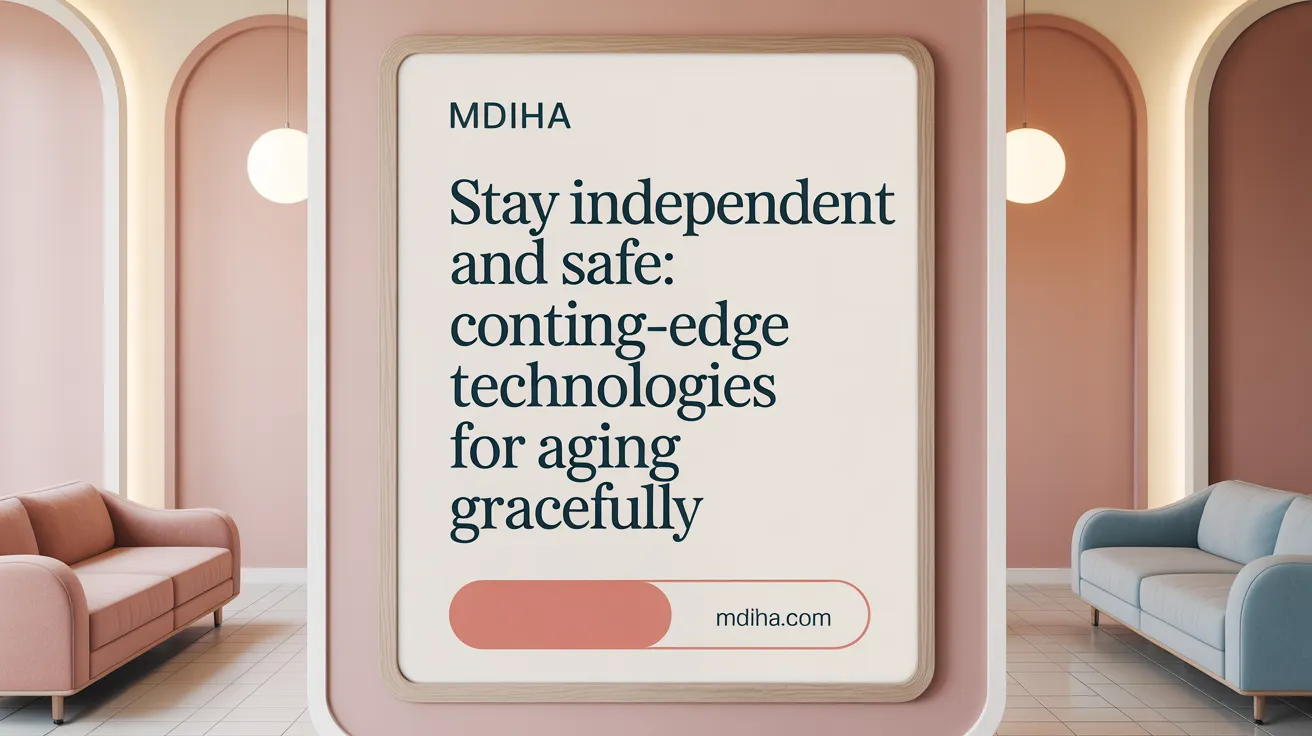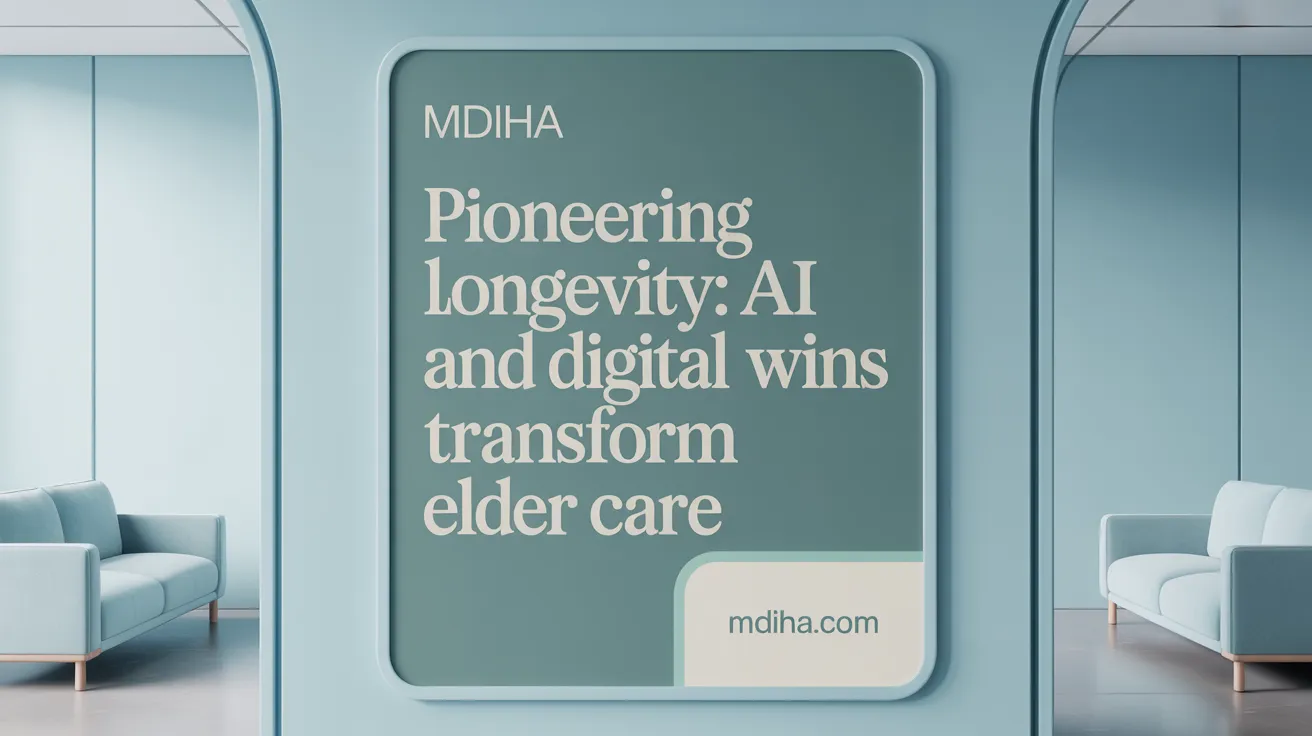Embracing Innovation for Healthier Aging
As global populations age, innovative therapies and technological advancements are reshaping how we perceive and support healthy aging and wellness. From breakthroughs in artificial intelligence and personalized medicine to integrative holistic practices and assistive devices, diverse approaches converge to extend healthspan, enhance quality of life, and promote independence for older adults. This article explores the multifaceted innovations driving improved health outcomes, social engagement, and emotional resilience among seniors, outlining how emerging research and technology are fundamentally redefining aging in the 21st century.
Technology-Driven Support for Independence and Safety in Aging

How do innovative therapies and technological advancements support healthy aging and wellness?
Advances in technology are transforming the way older adults maintain their health, independence, and well-being. Wearable devices and smart home systems are at the forefront, constantly monitoring vital signs and environmental conditions.
Wearable health gadgets such as fitness trackers and smartwatches track parameters like heart rate, activity levels, and fall detection. These devices provide real-time alerts to users and caregivers, ensuring prompt action in emergencies.
Smart home systems, including voice assistants, automated lighting, and security features, create safer living environments. For example, fall detection systems like Nobi lighting can automatically adjust lighting and notify caregivers if a fall occurs, reducing injury risks.
Assistive technologies like advanced hearing aids and visual aids, such as glasses integrated with hearing support, help older adults overcome sensory declines. These innovations improve communication, safety, and engagement.
Artificial intelligence (AI) enhances daily living through embedded voice assistance, personalized health cues, and environment management. AI-driven virtual assistants like Alexa support medication reminders and facilitate social connections.
Remote health monitoring and telemedicine services further extend care beyond clinics. Devices that measure blood pressure or glucose remotely send data directly to healthcare providers, enabling early detection and management of health issues.
Research shows that these technologies contribute significantly to healthier aging by promoting safety, independence, and continuous health management. The integration of AI, wearables, and smart environments empowers seniors to live active, engaged, and secure lives.
| Technology Area | Examples | Benefits |
|---|---|---|
| Wearable Devices | Fitness trackers, smartwatches | Monitor health, detect falls, alert caregivers |
| Smart Home Systems | Voice assistants, automated lighting | Enhance safety, automate daily tasks |
| Assistive Technologies | Hearing aids, visual aids | Improve sensory perception |
| AI and Voice Aids | Alexa, digital assistants | Provide reminders, facilitate social contact |
| Remote Monitoring | Blood pressure cuffs, glucose meters | Early detection, continuous health data |
These innovations support a comprehensive approach to aging well, emphasizing physical safety, mental engagement, and social connectivity.
Artificial Intelligence and Digital Twin Innovations in Elder Care

How do assistive devices, artificial intelligence, and digital twin technologies enhance independent living and health in older adults?
Assistive devices like wearable health monitors, smart home systems, and AI-powered alert mechanisms play a vital role in supporting older adults to live independently. They enable continuous tracking of vital signs, detect falls, and automate tasks such as lighting and security, reducing safety risks.
Artificial intelligence (AI) enhances these benefits by analyzing health data in real-time, providing personalized alerts, reminders, and predictive insights to both users and caregivers. AI-powered virtual assistants aid with communication, medication management, and everyday tasks, fostering confidence and autonomy.
Digital twin technology introduces a new frontier in personalized healthcare. By creating virtual replicas of an individual’s organs or bodily systems, healthcare providers can simulate responses to treatments and predict health changes. This predictive capability allows for tailored treatment plans that optimize safety and effectiveness.
The integration of machine learning in detecting early signs of diseases such as dementia and peripheral artery disease provides opportunities for early intervention. AI models process complex data, including voice changes, mobility patterns, and physiological signals, to identify health risks before symptoms become severe.
Latest innovations include AI-driven social robots and voice assistant systems, which support cognitive health by encouraging social interaction, mental exercises, and emotional well-being. These technologies help reduce loneliness and mental decline among older adults.
In emergency scenarios, AI-enhanced telehealth services and remote monitoring systems ensure quick access to medical support — vital for maintaining independence and responding rapidly to health crises.
Overall, these technological advancements empower older adults to maintain control over their health, enjoy greater independence, and improve their quality of life. The combination of assistive devices, AI, and digital twin applications represents a transformative approach to eldercare—making aging in place safer, more sustainable, and more personalized.
Creative Arts Therapies and Holistic Practices for Mental and Physical Well-being

How do creative arts therapies and holistic practices impact mental and physical well-being in aging?
Creative arts therapies, including painting, music, dance, and theater, have shown promising effects on both mental and physical health in older adults. These activities foster emotional expression, stimulate cognitive functions, and enhance social interactions, which can combat loneliness and depression common in aging populations.
Research indicates that engaging in artistic activities helps delay cognitive decline by promoting neuroplasticity—the brain's ability to reorganize and form new connections. These therapies boost emotional resilience, supporting mental health by reducing stress, anxiety, and feelings of helplessness.
Holistic approaches like yoga, meditation, and lifestyle interventions work on the biological level as well. They help reduce oxidative stress and modulate chronic inflammation—factors associated with aging. Practices such as yoga improve cardiovascular and musculoskeletal health, contributing to physical vitality.
Furthermore, creative and holistic activities promote self-awareness, self-esteem, and social connectivity. Such engagement nurtures a sense of purpose and community, which is vital for emotional well-being.
How do these practices support a comprehensive view of healthy aging?
Integrating arts therapies with conventional medical treatment offers a broader, more personalized approach to aging. This holistic method considers emotional, social, mental, and physical well-being, addressing the complexities of aging beyond just managing disease.
Evidence suggests that combining complementary therapies with standard care results in better health outcomes. These activities can improve mood, cognitive performance, and overall quality of life, emphasizing the importance of a balanced, engaging lifestyle for aging individuals.
By fostering emotional expression and social bonds through arts, alongside physical activities like yoga, holistic practices support resilience and vitality in later years, promoting a truly well-rounded, healthy aging process.
Advances in Digital Health Tools and Personalized Nutrition for Longevity
What are the recent advances in digital health tools, personalized nutrition, and anti-aging interventions that contribute to longevity and quality of life?
Modern technology has significantly transformed approaches to healthy aging. Digital health tools such as mobile applications, wearables, sensors, and artificial intelligence (AI) now play an essential role in managing health and nutrition. These devices enable continuous real-time monitoring of vital signs, physical activity, and dietary habits, allowing for highly personalized health insights.
Wearable devices like fitness trackers and smartwatches help older adults keep track of their daily movements, detect falls, and monitor vital parameters such as heart rate and blood pressure. AI algorithms analyze this data to craft customized nutrition plans, promoting healthier eating habits and supporting aging well.
In addition to daily monitoring, blockchain technology is being integrated into food supply chains to enhance safety and transparency. This ensures that consumers have access to reliable, traceable food sources—an important aspect of maintaining proper nutrition.
On the anti-aging front, emerging therapies show great promise. NAD+ boosters like NMN and NR are being studied for their ability to support mitochondrial health and cellular energy production, both of which decline with age. Stem cell therapy, especially using mesenchymal stem cells, aims to regenerate tissues, repair damage, and potentially rejuvenate skin, joints, and cardiovascular tissues.
Gene editing techniques, including CRISPR-Cas9, are being researched for their capacity to repair genetic mutations associated with age-related diseases like macular degeneration and Parkinson’s. Meanwhile, senolytic drugs target and eliminate senescent cells, reducing inflammation and improving physical function.
Finally, immersive technologies such as virtual reality and gamification-based cognitive training enhance mental acuity and combat cognitive decline. These advances collectively contribute to longer, healthier lives by supporting physical, mental, and emotional well-being in older adults.
Research and Innovations Driving Improved Health Outcomes for Older Adults
What role do current research and innovations play in improving health outcomes for older adults?
Recent advances in technology and research are significantly transforming how health care is delivered to the aging population.
Artificial intelligence (AI) and machine learning are at the forefront, enabling early diagnosis of age-related conditions such as dementia and peripheral artery disease. These tools analyze complex data, including biomarkers, voice, and physiological signals, to detect health issues sooner and more accurately.
Remote health monitoring devices, wearable sensors, and telemedicine platforms ensure continuous, personalized care. They help detect subtle health changes at home, reduce hospital visits, and facilitate quick response in emergencies.
Assistive devices, like smart hearing aids and virtual reality (VR), support cognitive and physical health, boosting independence and well-being. VR experiences, for instance, allow older adults to virtually travel or participate in engaging activities that improve mental wellness.
Community programs are promoting active aging by encouraging lifelong learning and social participation. They provide opportunities for seniors to stay connected, learn new skills, and remain engaged, which are vital for mental and emotional health.
AI-driven social platforms help reconnect older adults with their communities, combat loneliness, and bolster social support networks.
Emerging screening technologies aim for population-wide application, offering scalable means to identify at-risk individuals early. This includes digital biomarkers and AI-guided diagnostics integrated into routine health assessments.
Moreover, policies supporting age-friendly environments and lifelong learning programs help create supportive, inclusive societies for older adults.
Overall, these innovations are making elder care more accessible, safe, and tailored, leading to improved health outcomes and enhanced quality of life for aging populations.
Promoting Social Engagement and Holistic Wellness in Aging

How do innovative therapies and technological advancements support healthy aging and wellness?
Recent developments in technology and therapeutic practices are transforming the landscape of aging, emphasizing a comprehensive approach to well-being. Digital platforms, such as online social networks and communication apps, play a vital role in reducing loneliness by connecting older adults with family, friends, and community groups.
Artificial intelligence (AI) facilitates intergenerational mentoring programs through sophisticated matchmaking algorithms. These platforms pair seniors with youth mentors, fostering social bonds, purpose, and knowledge exchange, which are crucial for mental health and emotional resilience.
Holistic aging now includes emotional, educational, and social well-being alongside physical health. Creative arts therapies, like music, dance, and visual arts, enhance emotional expression and cognitive vitality. Equine therapy and animal-assisted programs are gaining popularity for improving physical balance, emotional bonding, and reducing anxiety.
Innovations in mobility and sensory support—such as smart mobility aids, hearing and vision enhancements—further empower older adults to maintain independence. These advancements not only address physical challenges but also promote mental and social engagement.
Overall, integrating these therapies and technologies offers a multifaceted approach to aging, promoting delay of decline, fostering purpose, and improving quality of life for older adults.
The Future of Healthy Aging: Integrative and Adaptive Innovations
Innovative therapies and technological advancements are fundamentally transforming the landscape of healthy aging and wellness. By integrating AI, assistive devices, creative arts, holistic healthcare, and cutting-edge digital tools, we can personalize prevention, enhance early detection, and empower older adults to maintain independence and social connection. Ongoing research into longevity interventions and the adoption of inclusive, age-friendly policies further strengthen this paradigm shift. As these multifaceted innovations continue to evolve and converge, they hold immense promise for extending healthspan and enriching the quality of life for aging populations worldwide.
References
- Technology & Innovations and the Future of Aging
- Stanford Medicine Center for Longevity and Healthy Aging ...
- Creativity and art therapies to promote healthy aging
- How AI and New Technology Could Support Healthy Aging
- 8 tech innovations that support a healthy ageing population
- Digital Anti-Aging Healthcare: An Overview of the Applications ...
- Innovations in Anti-Aging Medicine: What's New on the ...
- Neurobiological and anti-aging benefits of yoga
